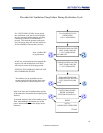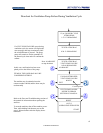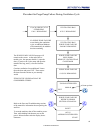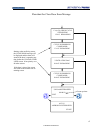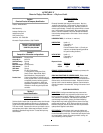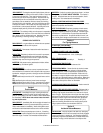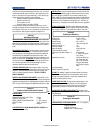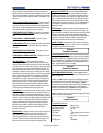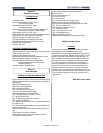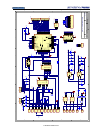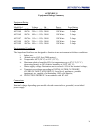
72
OWNER’S MANUAL
Various mammalian species exposed to lethal concentrations of
ethylene oxide had symptoms of mucous membrane irritation, central
nervous system depression, lacrimation, nasal discharge, salivation,
nausea, vomiting, diarrhea, respiratory irritation, incoordination, and
convulsions.
TOXICOLOGICAL-CHRONIC INHALATION:
Symptoms of chronic
exposure are similar to those observed in acute studies, including
lung, kidney and liver damage and testicular tubule degeneration in
some species. Studies demonstrated neuromuscular effects as the
most sensitive indicator of ethylene oxide over exposure.
TOXICOLOGICAL-ACUTE DERMAL:
No dermal LD50 information
is available on this product. It is expected to be corrosive to rabbit
skin.
TOXICOLOGICAL – CHRONIC DERMAL:
No chronic dermal
toxicity data are available on this product.
TOXICOLOGICAL- EYE:
No eye irritation animal data are available
on this product. However, it is expected to extremely irritating to
rabbit eyes.
TOXICOLOGICAL-ACUTE INGESTION:
The acute oral LD50 for
This product is; 72 mg/kg, rat
TOXICOLOGICAL-CHRONIC INGESTION:
The effects of chronic
ingestion of this product are unknown
CARCINOGENICITY:
A recent assessment of available
epidemiology studies related to ethylene oxide concluded that the
evidence indicates that ethylene oxide does not cause heart disease,
an excess of cancers overall, or brain, stomach or pancreatic cancers
which were seen in some animal and isolated human studies. The
findings with respect to leukemia and non-Hodgkins lymphoma are
less definitive. While the majority of the evidence does not indicate
that ethylene oxide causes these cancers, there are some suggestive
trends. Longer follow-up of ethylene oxide workers is needed to
better clarify these relationships. Two inhalation studies with rats
demonstrated carcinogenic responses consisting of increased inci-
dences of mono-nuclear cell leukemia, peritoneal mesotheliomas ,
and primary brain tumors. In 2-year inhalation studies with mice
there was evidence of carcinogenic activity as indicated by dose-
related incidences of benign or malignant neoplasms of the uterus,
mammary gland, and hematopoietic system (lymphoma).
MUTAGENICITY:
While ethylene oxide has demonstrated, in epide-
miological studies with exposed workers, an increased incidence of
chromosomal aberrations and sister chromatid exchanges, the rele-
vance of such effects to human health hazard evaluation is currently
uncertain. In rodent studies, dose related exposure to ethylene oxide
induces increases in numbers of adducts in DNA and hemoglobin.
Laboratory studies with mice have shown that acute exposure to
ethylene oxide at 300 ppm and above caused testicular injury as
evidenced by concentration-related increased embryonic deaths
following mating of exposed males to non-exposed females
(Dominant-Lethal Test).
NEUROTOXICITY:
Effects are similar to those of acute (short term)
exposure, namely headaches, nausea, diarrhea, lethargy, and
irrational behovior. Muscle weakness, loss of sensation in the
extremities and a reduction in the sense of smell and/or taste may
also result. Studies on workers Indicate that CNS and cognitive im-
pairment may result from chronic exposures to ethylene oxide.
REPRODUCTIVE EFFECTS: Some limited epidemiological data
suggests that women exposed to ethylene oxide have a greater
incidence of miscarriages. A one-generation reproduction study in
rats showed decreased number of pups at 100 ppm, but not at 33
ppm. In a two-generation reproduction study involving exposure of
rats to ethylene oxide vapor for 5 hrs/day, 5 days/week, there was
parental toxicity at 33 ppm and 100 ppm. The no-observable effect
concentration for adult toxicity, offspring effect and reproductive
effect was 10 ppm.
TERATOLOGY:
Inhalation development toxicity studies with rats
exposed to ethylene oxide vapor at concentrations of 50 ppm, 125
ppm and 225 ppm showed that maternal toxicity occurred at 125 and
225 ppm. Fetotoxicity, evidenced by reduced fetal body weight,
occurred at all concentrations. At 225 ppm and to a lesser extent at
125 ppm an increased incidence of skeletal variants was found.
There was no evidence of embryotoxicity or malformations.
TARGET ORGANS:
Overexposure to this product may affect the
skin, eyes, respiratory system, liver, kidneys, brain, blood, reproduc-
tive system, and central nervous system.
ECOTOXICOLOGICAL DATA:
Ethylene oxide hydrolyzes to ethyl-
ene glycol. Biodegradation of ethylene oxide occurs at a moderate
rate after acclimation (3-5% degradation after 5 days; 52% after 20
days). Biodegradation is expected in a wastewater treatment plant.
Ethylene oxide has an estimated half-life in the atmosphere of 211
days. A high adsorptivity in soil is expected.
WASTE MANAGEMENT/DISPOSAL:
Dispose used Anprolene
ampoules, sterilization liner bags, indicators and accessories as you
would ordinary trash.
However, unused Anprolene ampoules containing ethylene oxide
are a RCRA hazardous waste with waste code U115 (Commercial
chemical product - listed for toxicity and ignitability). Unused
Anprolene ampoules containing ethylene oxide may be incinerated in
an approved hazardous waste incinerator or can be biologically
treated in an approved facility. Unused Anprolene ampoules con-
taining ethylene oxide are banned from land disposal.
Dispose of waste materials in accordance with all applicable Federal,
State and local laws and regulations.
TRANSPORTATION DATA
:
DOT Proper shipping Name: Ethylene Oxide
DOT Class or Division: 2.3 (Poison Gas)
Identification Number UN 1040
Packing Group: n/a
DOT Label: “This package conforms to 49 CFR
173.4”
DOT Packaging See section 7, “Handling and stor
age”
DOT Approval: CA-9803005
Section 11
Ecological Information
Section 12
Disposal Consideration
Section 13
Transport Information
© Andersen Products Ltd



